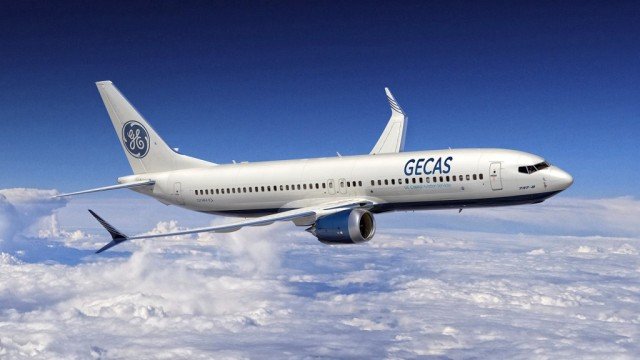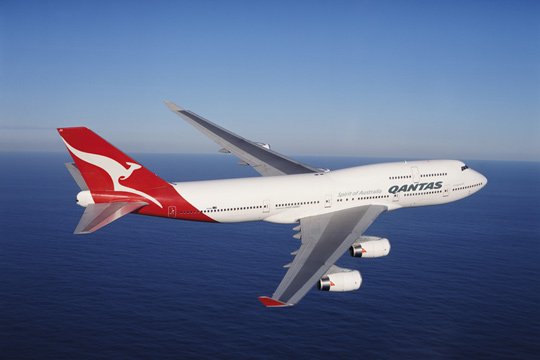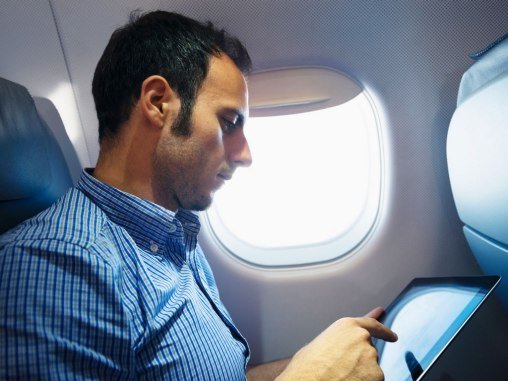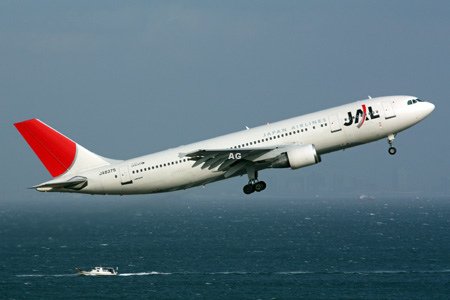Home Tags Posts tagged with "Aviation"
Aviation
General Electric has confirmed that it has placed an order for 40 Boeing planes worth $4 billion at list prices.
The order includes 20 737 MAX 8 planes and 20 next-generation 737-800 jets.
The order was booked last year, but so far had been attributed to an “unidentified customer” by Boeing.
GE Capital Aviation Services (GECAS) said the new planes would help it meet growing demand for more fuel-efficient aircraft from its customers.
“Our airline customers require more fuel-efficient aircraft to compete in the marketplace,” Norman CT Liu, chief executive of GECAS, said in a statement.

General Electric has confirmed that it has placed an order for 40 Boeing planes worth $4 billion at list prices
GECAS has now placed total orders for 95 units of 737 MAX 8 airplanes and 387 of the next-generation 737-800 jets making it the biggest buyer of the two models in the leasing industry.
A slowdown in global travel demand, coupled with high fuel prices, has hurt the profitability of many airlines across the globe in recent years.
As a result, airlines have been looking to keep their costs in check to try and sustain their profitability.
That has in turn caused a rise in demand for fuel-efficient aircraft.
The 100-200 seat narrow-body – or single-aisle – aircraft market is forecast to generate $20 trillion over the next 20 years.
The sector is currently dominated by Airbus’s A320 and Boeing’s 737 aircraft, but other firms are also looking to tap into the market.
Boeing has claimed that its next-generation 737’s offer the “lowest operating costs in its class”.
Standard & Poor’s has cut Qantas airline credit rating to “junk”.
The downgrade could increase the Australian airline’s borrowing costs and sends a warning to investors.
The move by S&P comes after Qantas issued a surprise profit warning and announced 1,000 job cuts on Thursday.
The carrier expects to make losses of up to A$300 million ($271million) in the July-to-December period.
S&P said the rating cut reflected its view “that intense competition in the airline industry has weakened Qantas’ business risk profile to fair from satisfactory, and financial risk profile to significant from intermediate.”
It lowered the carrier’s rating from the lowest investment grade, BBB-, to BB+.

Qantas issued a surprise profit warning and announced 1,000 job cuts
Gareth Evans, chief financial officer of Qantas, said the downgrade was “not unexpected” and “highlights the unprecedented pressures that the Qantas Group is facing from several external forces but particularly from an uneven playing field in the Australian aviation market”.
However, Gareth Evans added that Qantas “retains a strong financial position, including a large cash balance and a significant asset base”.
Qantas said in a statement that it had a cash balance of A$2.8 billion as of June 30 2013 and had reduced its debt by A$1 billion in the last financial year.
Moody’s rating agency warned on Thursday that it may also lower the Australian flag carrier’s rating.
Qantas has been hurt by a range of factors in recent times including higher fuel costs, subdued global travel demand and increased competition.
The airline has claimed that its ownership rules, which limit total foreign holding of Qantas to 49%, with foreign airlines allowed to own just 35%, have further hurt its growth.
Qantas has argued that limits on its foreign ownership have benefited arch rival Virgin, which has attracted investment from foreign carriers Etihad, Singapore Airlines and Air New Zealand.
Last month, the airline backed a suggestion by Australian Treasurer Joe Hockey that these rules should be changed.
Qantas has also said it needs government action to help it compete more effectively.
Australia’s PM Tony Abbott indicated that the government was unlikely to give Qantas any financial support.
[youtube OVEaaH5mBP0 650]
The US aviation authority has announced the use of portable electronic devices will soon be allowed on US planes during all phases of flight.
The Federal Aviation Administration (FAA) will now permit passengers to use gadgets such as tablet computers and e-readers during take-off and landing.
Many airlines are expected to adopt the new guidelines by the end of the year.
Aviation and mobile technology experts had advised the FAA the rule change would be safe.
“These guidelines reflect input from passengers, pilots, manufacturers, and flight attendants,” Transportation Secretary Anthony Foxx wrote in a statement.
“We believe today’s decision honors both our commitment to safety and consumer’s increasing desire to use their electronic devices during all phases of their flights.”

The FAA will now permit passengers to use gadgets such as tablet computers and e-readers during take-off and landing
A review committee recently determined that most commercial aircraft can tolerate radio interference signals from such devices, the FAA said.
Covered under the rule change are lightweight, electrically powered devices including music players, gaming consoles and smart phones – with the mobile telephone service disabled.
Phone calls from mobile phones remain prohibited throughout flights under separate regulations of the Federal Communications Commission.
Individual airlines will have to assess whether their planes can handle the additional radio interference from the devices.
“There is one thing that won’t change,” FAA Administrator Michael Huerta told reporters at Ronald Reagan Washington National Airport near Washington DC on Thursday.
“Passengers must take a break from their devices, their reading material, their music, whatever they are doing, and listen to the safety briefing before each flight. It is information that can save your life.”
[youtube SWWrfFx8t2M 650]
Airbus has announced its first deal with Japanese carrier Japan Airlines (JAL).
The aircraft manufacturing giant has won an order from JAL for 31 of its A350 planes, in a deal worth nearly $9.5 billion at list prices.
The A350 is designed to be more fuel-efficient and is a direct competitor to rival Boeing’s 787 Dreamliner, which has been hit by safety and technical issues in recent months.
The deal is a blow for Boeing, which has dominated Japan’s aviation market.
“This is Airbus’ largest order for the A350 so far this year and is the largest ever order we have received from a Japanese airline,” said Fabrice Bregier, chief executive of Airbus.
“I must say that achieving this breakthrough order and entering a traditional competitor market was one of my personal goals.”

Airbus has won an order from JAL for 31 of its A350 planes, in a deal worth nearly $9.5 billion at list prices
According to the deal, JAL also has an option to purchase an additional 25 planes.
In recent years, the aviation industry has been hurt by a slowdown in demand and high volatility in global fuel prices.
That has seen many leading carriers turn to more fuel-efficient aircraft in an attempt to cut down costs and maintain profitability.
Both Airbus and Boeing have seen a surge in demand for such planes.
Airbus, which says the A350 will use about 25% less fuel than previous generation wide-bodied aircraft, has had 725 orders for the plane prior to securing the JAL deal.
The company hopes to start delivering the first A350s to customers by the end of 2014.
Yoshiharu Ueki, president of Japan Airlines, said the new planes would offer “high level of operational efficiency and product competitiveness” and help the airline to cater to “new business opportunities after slots at airports in Tokyo are increased”.
Meanwhile, Boeing’s 787 Dreamliner continues to remain popular despite this year’s temporary worldwide grounding of the aircraft while safety regulators investigated the cause of fires. Boeing has received orders for more than 950 Dreamliner jets so far.
Japanese carriers, JAL and All Nippon Airways (ANA), are two of the biggest operators of the Dreamliner jets.
[youtube R-9VT2_H_20]




